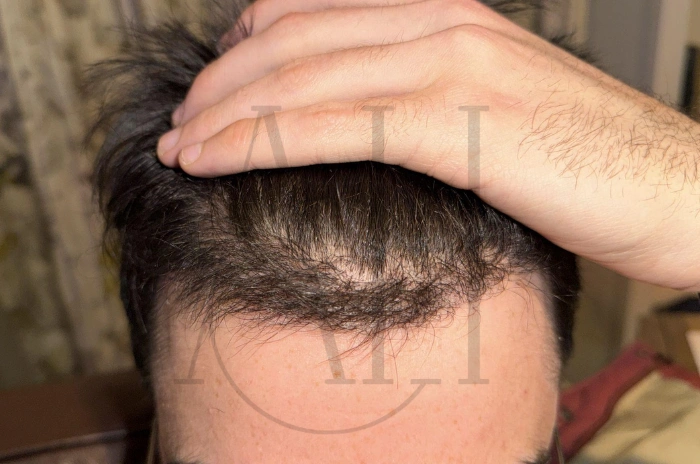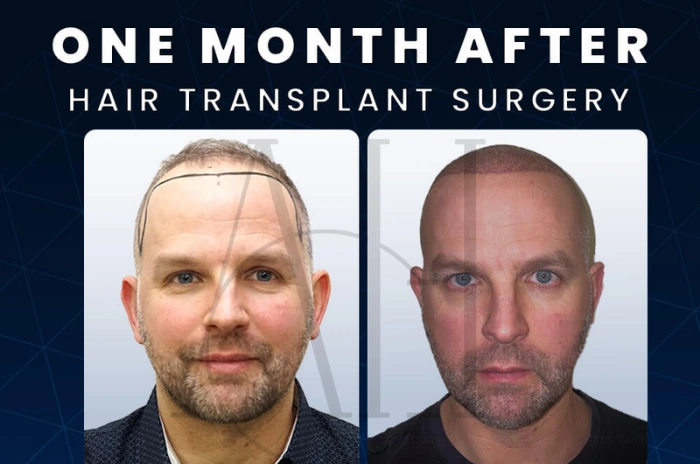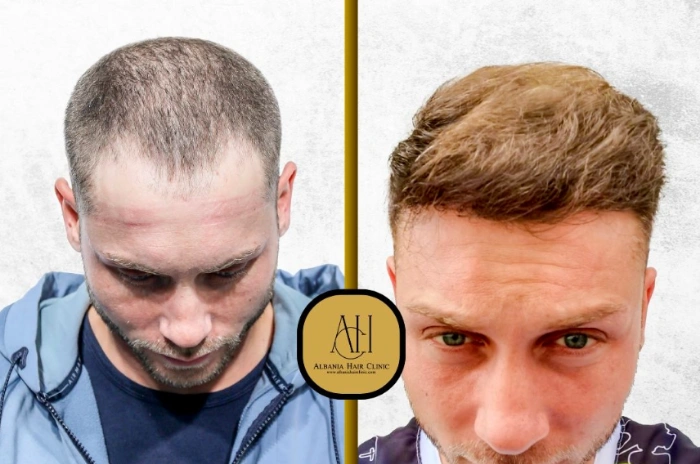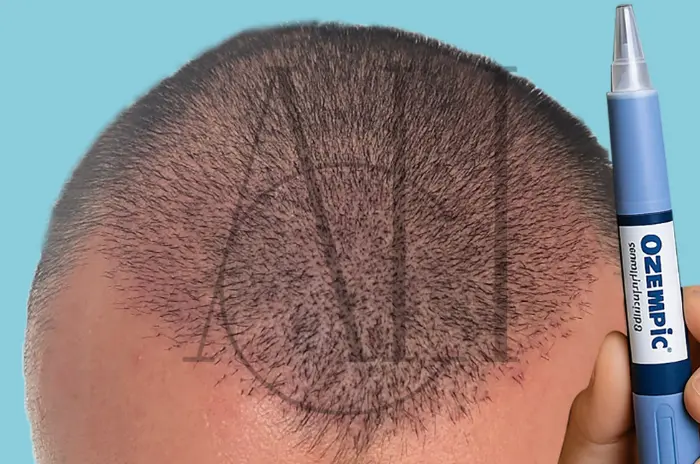Hair loss affects millions of people worldwide, leading many to consider hair restoration options. Unfortunately, the field of hair transplants is surrounded by numerous misconceptions and outdated information that can prevent people from making informed decisions. These common hair transplant myths often stem from older techniques, misleading marketing, or simply a lack of understanding about modern procedures.
Whether you’re experiencing male pattern baldness, female hair loss, or other forms of alopecia, separating fact from fiction is crucial when considering your options. This comprehensive guide will address the most persistent myths about hair transplantation, providing you with accurate, science-based information to help you understand what modern hair transplant procedures can and cannot achieve.
Table of Contents
ToggleIntroduction to Hair Transplant Misconceptions
The world of hair restoration has evolved dramatically over the past few decades. What was once a crude procedure that left obvious, unnatural-looking results has transformed into sophisticated surgical techniques that can produce remarkably natural outcomes. However, many people’s perceptions remain stuck in the past, influenced by outdated images and information.
Why Myths Persist
Several factors contribute to the persistence of hair transplant myths. First, the internet is filled with conflicting information, ranging from legitimate medical sources to marketing materials and personal anecdotes. Second, the aesthetic industry sometimes promotes unrealistic expectations to attract patients. Third, people often base their understanding on older techniques like punch grafts, which were used decades ago but bear little resemblance to modern methods.
Social media and celebrity culture also play a role in perpetuating misconceptions. When public figures discuss their experiences, the information can become distorted as it spreads, creating new myths or reinforcing existing ones.
How This Guide Will Help You
This guide systematically examines the most common misconceptions about hair transplantation, contrasting myths with medical facts. We’ll explore everything from pain levels and recovery times to costs and results, giving you the knowledge needed to make an informed decision about whether hair transplant procedures are right for you.
Myth 1 – Hair Transplants Provide Instant Results
One of the most persistent myths is that hair transplant results appear immediately after surgery. This misconception likely stems from marketing materials that show dramatic before-and-after photos without explaining the timeline involved.
The Reality of Growth Timelines
The truth about how long does hair transplant take to grow is quite different from instant gratification expectations. Transplanted hair follows a specific growth cycle that requires patience and realistic expectations.
| Timeline | What to Expect |
|---|---|
| Day 1-14 | Initial healing, small scabs form |
| 2-4 weeks | Transplanted hair shafts fall out (normal) |
| 3-4 months | New growth begins, fine and thin |
| 6 months | 60-80% of final result visible |
| 12-18 months | Complete hair transplant results timeline achieved |
Immediately after surgery, the transplanted hair shafts may be visible, but these will typically fall out within 2-4 weeks. This is completely normal and part of the process. The hair follicles remain intact beneath the skin and enter a resting phase before beginning to produce new hair.
New growth typically begins around 3-4 months post-surgery, starting as fine, thin hair that gradually becomes thicker and stronger. By 6 months, patients usually see noticeable improvement, with 60-80% of the final result visible. The complete hair transplant results timeline extends to 12-18 months, when the full density and thickness are achieved.
What “Shock Loss” Really Is
Shock loss is another aspect of hair transplantation that contributes to timeline misconceptions. This temporary shedding can affect both transplanted and existing hair around the surgical site. Many patients panic when they experience shock loss, thinking the procedure has failed.
In reality, shock loss is a normal response to the trauma of surgery. The hair follicles are responding to the surgical stress by entering a resting phase. This temporary shedding typically occurs 2-6 weeks after surgery and affects hair that was already in a weakened state due to androgenetic alopecia.
The key word here is “temporary.” Hair affected by shock loss usually regrows within 3-6 months, often stronger than before due to improved blood supply in the area.
Myth 2 – Hair Transplants Are Painful
The question “are hair transplants painful?” ranks among the top concerns for potential patients. This myth likely persists because any surgical procedure naturally raises concerns about discomfort, and outdated information about older techniques continues to circulate.
What Local Anesthesia Actually Feels Like
Modern hair transplant procedures are performed under local anesthesia, which effectively numbs the scalp throughout the surgery. The initial injection of anesthetic is the most uncomfortable part of the entire procedure, often described as similar to dental work.
| Pain Level Comparison | Description |
|---|---|
| Anesthetic injection | Similar to bee sting or dental injection |
| During surgery | No pain, may feel slight pressure |
| First 24 hours | Mild discomfort, manageable with medication |
| Days 2-7 | Tenderness similar to mild sunburn |
| After 1 week | Minimal to no discomfort |
Most patients report that the anesthetic injection feels like a series of small pinches or bee stings. Once the numbing takes effect, which happens within minutes, patients typically feel no pain during the actual transplantation process. Some surgeons use advanced techniques like vibration anesthesia or topical numbing agents to minimize even this initial discomfort.
During the procedure, patients often watch movies, listen to music, or even take breaks to eat lunch. The biggest challenge is usually sitting still for several hours rather than dealing with pain.
Post-op Discomfort vs. Pain
Is hair transplant painful after surgery? Most patients experience mild discomfort rather than significant pain during recovery. The scalp may feel tight, tender, or slightly swollen for the first few days, similar to a mild sunburn.
Prescribed pain medications are typically sufficient to manage any discomfort, and many patients find that over-the-counter pain relievers are adequate. The donor area (back of the head) usually experiences more tenderness than the recipient area, especially with FUT procedures that involve removing a strip of scalp.
Sleep position may need adjustment for the first week, and patients should avoid touching or scratching the treated areas. However, most people return to work within 2-5 days, depending on their job requirements and personal comfort level.

Myth 3 – Results Look Fake or Pluggy
The fear of achieving an unnatural hair transplant natural look stems from outdated techniques used decades ago. Early hair transplants often used large punch grafts that created a distinctive “doll’s hair” or “corn row” appearance that was obviously artificial.
Why Follicular Units Are More Natural
Modern hair transplantation focuses on follicular units, which are naturally occurring groups of 1-4 hairs. These units exist naturally in the scalp and, when transplanted intact, produce results that are virtually indistinguishable from natural hair growth patterns.
| Technique | Graft Size | Natural Appearance |
|---|---|---|
| Old Punch Grafts | 4-6mm (10-20 hairs) | Obvious, pluggy look |
| Modern FUE/FUT | 1-4 hairs per unit | Hair transplant natural look |
| Hairline Design | Single hair grafts | Soft, feathered edges |
Follicular Unit Extraction (FUE) and Follicular Unit Transplantation (FUT) both work with these natural groupings, but extract and transplant them differently. FUE removes individual follicular units one by one using a small circular punch, while FUT removes a strip of scalp that is then dissected into individual follicular units under microscopic magnification.
The key to achieving a hair transplant natural look lies in the surgeon’s artistic skill and understanding of natural hair growth patterns. Factors like hairline design, hair direction, density distribution, and the strategic placement of single-hair grafts all contribute to natural-looking results.
The Role of Surgical Technique & Planning
Creating natural results requires extensive planning before the first incision is made. The surgeon must consider the patient’s age, existing hair loss pattern, future progression, facial features, and personal preferences.
Hairline design is particularly crucial, as this is the most visible aspect of the transplant. A skilled surgeon creates an irregular, age-appropriate hairline that follows natural patterns rather than a straight, artificial-looking line. The use of single-hair follicular units at the hairline creates soft, feathered edges that blend seamlessly with the patient’s facial features.
Density planning is equally important. Rather than trying to achieve maximum density everywhere, experienced surgeons focus on creating the illusion of fullness through strategic placement. This approach not only looks more natural but also makes better use of limited donor hair.
Myth 4 – Only Men Can Have Transplants
The misconception that hair transplant women cannot benefit from these procedures stems from differences in female hair loss patterns and older surgical approaches that weren’t well-suited to women’s needs.
Hair Loss & Transplants in Women
Female pattern hair loss differs significantly from male pattern baldness. While men typically experience receding hairlines and crown balding, women usually experience diffuse thinning across the top of the scalp while maintaining their hairline. This pattern presents unique challenges and opportunities for transplantation.
| Gender | Hair Loss Pattern | Transplant Suitability |
|---|---|---|
| Men | Receding hairline, crown balding | Excellent candidates |
| Women | Diffuse thinning, maintained hairline | Good candidates when properly selected |
| Hair transplant for women | Traction alopecia, scarring | Highly effective results |
Hair transplant for women can be highly effective when candidates are properly selected. Women with well-defined areas of hair loss, such as those with traction alopecia from tight hairstyles, trauma-related scarring, or specific patterns of androgenetic alopecia, often achieve excellent results.
The key is identifying women who have stable donor areas with sufficient density to provide adequate grafts. Some women may not be ideal candidates if their hair loss is too diffuse or if they have conditions like telogen effluvium that cause temporary, reversible hair loss.
Gender Differences in Planning and Outcomes
Hair transplant women procedures require different planning considerations than those for men. Female hairlines are typically lower and more rounded than male hairlines, and women often prefer to maintain longer hair that can cover the donor area during healing.
Surgical techniques may also differ slightly. Women often benefit from trichophytic closures in FUT procedures, which allow hair to grow through the scar line, making it less visible. FUE may be preferred for women who wear very short hairstyles or have concerns about linear scarring.
Recovery considerations may also vary, as women are often more concerned about visible signs of surgery and may take longer before feeling comfortable returning to social activities. However, the actual healing process and timeline remain similar regardless of gender.
Myth 5 – Transplants Are Only for the Wealthy
The belief that hair transplants are prohibitively expensive often prevents people from exploring their options. While these procedures do represent a significant investment, the reality of hair transplant cost is more nuanced than many people realize.
Cost per Graft and Total Cost Range
Hair transplant cost per graft varies significantly based on geographic location, surgeon experience, clinic facilities, and technique used. In the United States, costs typically range from $3-8 per graft, with most procedures requiring 1,000-3,000 grafts.
| Location | Hair transplant cost per graft | Total Procedure Cost |
|---|---|---|
| United States | $3-8 per graft | $4,000-15,000 |
| Turkey | $1-2 per graft | $2,000-5,000 |
| Mexico | $1.5-3 per graft | $2,500-6,000 |
| Eastern Europe | $2-4 per graft | $3,000-8,000 |
A typical hair transplant might cost between $4,000-15,000, depending on the extent of hair loss and the number of grafts needed. While this represents a substantial upfront investment, it’s important to consider the long-term value compared to ongoing treatments.
Geographic arbitrage has made hair transplants more accessible, with high-quality procedures available in countries like Turkey, Mexico, and Eastern Europe at significantly lower costs. However, patients considering medical tourism should carefully research surgeons’ qualifications and facility standards.
Financing Options & Value Analysis
Many clinics now offer financing hair transplant options, including payment plans, medical credit cards, and partnerships with healthcare financing companies. These options can make the procedure more accessible by spreading costs over time.
| Treatment Type | Monthly Cost | 10-Year Total | 20-Year Total |
|---|---|---|---|
| Hair Transplant | $0 (after initial) | $8,000 | $8,000 |
| Finasteride + Minoxidil | $50-100 | $6,000-12,000 | $12,000-24,000 |
| Hair System | $200-400 | $24,000-48,000 | $48,000-96,000 |
When evaluating cost, it’s important to consider the lifetime value compared to alternatives to hair transplants. Medications like finasteride and minoxidil require ongoing monthly expenses that can add up to thousands of dollars over years or decades. Non-surgical hair loss solutions like hair systems also require regular maintenance and replacement.
A hair transplant, while requiring a larger upfront investment, is typically a one-time procedure that provides permanent results. When viewed over a 10-20 year timeline, the cost per year often becomes quite reasonable compared to ongoing treatments.

Myth 6 – Hair Transplants Leave a Lot of Downtime
Concerns about extended recovery periods often stem from outdated information about older surgical techniques or confusion with other types of cosmetic surgery that require longer healing times.
Typical Downtime for FUE vs FUT
FUE vs FUT downtime differs primarily in the healing requirements for the donor area. FUE procedures create hundreds or thousands of small puncture wounds that heal relatively quickly, while FUT involves a linear incision that requires suture removal and longer healing time.
| Procedure Type | Return to Work | Exercise Restriction | Complete Healing |
|---|---|---|---|
| FUE vs FUT downtime – FUE | 2-3 days | 1-2 weeks | 7-10 days |
| FUE vs FUT downtime – FUT | 5-7 days | 2-3 weeks | 14-21 days |
With FUE, most patients can return to office work within 2-3 days, though they may prefer to work from home to avoid questions about small scabs in the donor area. The recipient area heals even faster, with any redness typically subsiding within a week.
FUT procedures generally require 5-7 days before patients feel comfortable returning to work, primarily due to tightness and tenderness in the donor area. Sutures are typically removed 10-14 days after surgery, after which most restrictions are lifted.
When You Can Get Back to Work
Most hair transplant recovery tips focus on managing the first week after surgery. Patients can typically resume desk work within 2-5 days, depending on their comfort level and the visibility of any healing signs.
| Activity | Timeline | Notes |
|---|---|---|
| Office work | 2-5 days | May prefer working from home initially |
| Light exercise | 1 week | Walking, light stretching |
| Heavy exercise | 2-3 weeks | Avoid sweating, impact activities |
| Swimming | 2-3 weeks | Avoid chlorinated water |
| Normal hair washing | 1 week | Gentle technique required initially |
Physical exercise restrictions are more significant, with patients advised to avoid heavy lifting, strenuous exercise, and activities that cause excessive sweating for 1-2 weeks. Swimming and exposure to chlorinated water should be avoided for at least two weeks.
The key to smooth hair transplant recovery is following post-operative instructions carefully, including gentle washing techniques, avoiding direct sun exposure, and sleeping with the head elevated for the first few nights.
Myth 7 – Transplant Results Don’t Last
The concern about whether hair transplant results permanent outcomes can be achieved is understandable, given that the underlying condition causing hair loss (androgenetic alopecia) is progressive and ongoing.
Genetic Resistance of Donor Hair
The permanence of hair transplant results is based on the principle of “donor dominance,” discovered by Dr. Norman Orentreich in the 1950s. Hair follicles from the back and sides of the scalp are genetically programmed to be resistant to DHT (dihydrotestosterone), the hormone responsible for androgenetic alopecia.
| Hair Location | DHT Sensitivity | Transplant Longevity |
|---|---|---|
| Crown/Temples | High sensitivity | Prone to loss without treatment |
| Donor area (back/sides) | Low sensitivity | Hair transplant results permanent |
| Transplanted hair | Maintains donor characteristics | Lifelong growth |
When these resistant follicles are transplanted to areas affected by hair loss, they maintain their genetic characteristics and continue to grow hair for the patient’s lifetime. This is why the donor area in men with advanced hair loss typically remains thick even when the top of the scalp is completely bald.
The transplanted hair will behave exactly like the hair from which it came, meaning it will continue to grow, can be cut and styled normally, and will age naturally with the patient. It may eventually gray or thin slightly with advanced age, but it will not fall out due to androgenetic alopecia.
Importance of Aftercare & Adjunct Therapies
While transplanted hair is permanent, the success of long-term results also depends on proper aftercare and sometimes additional treatments. Patients may need to address ongoing hair loss in non-transplanted areas through medications like finasteride or minoxidil.
| Treatment Type | Purpose | Timeline |
|---|---|---|
| Hair transplant results permanent | Restore lost hair | One-time procedure |
| Finasteride/Minoxidil | Prevent future loss | Ongoing maintenance |
| PRP therapy | Enhance hair health | Periodic treatments |
| Laser therapy | Support hair growth | Regular sessions |
Some patients choose to combine their transplant with non-surgical hair loss solutions like PRP (platelet-rich plasma) therapy, low-level laser therapy, or medical treatments to optimize overall hair health and potentially slow future hair loss.
Regular follow-up with the surgical team and adherence to any recommended maintenance treatments can help ensure the best long-term outcomes and patient satisfaction.
FAQ : Hair Transplants Facts vs Fiction Clearing the Confusion
Is a hair transplant a painful procedure?
Modern hair transplant procedures use local anesthesia to ensure patients experience minimal discomfort, with most describing the process as similar to dental work.
How long does it take to see the final results of a hair transplant?
Hair transplant results timeline shows initial growth at 3-4 months, significant improvement by 6 months, and final results achieved at 12-18 months post-surgery
Will my transplanted hair look fake or unnatural?
Modern techniques using follicular units create a completely hair transplant natural look that is indistinguishable from natural hair growth patterns.
Are hair transplants only for men?
Hair transplant women can achieve excellent results when properly selected as candidates, particularly those with well-defined areas of hair loss.
How much does a hair transplant cost?
Hair transplant cost per graft typically ranges from $3-8 in the US, with total procedure costs between $4,000-15,000 depending on the extent of treatment needed.
How long is the recovery and downtime after a hair transplant?
FUE vs FUT downtime varies, with FUE patients typically returning to work in 2-3 days and FUT patients needing 5-7 days for comfortable recovery.
Is it true that transplanted hair doesn't last?
Hair transplant results permanent outcomes are achieved because donor hair maintains its genetic resistance to DHT hormone throughout the patient’s lifetime.
What is "shock loss"?
Shock loss is temporary shedding of existing hair around the surgical site that occurs 2-6 weeks after surgery and typically regrows within 3-6 months.





